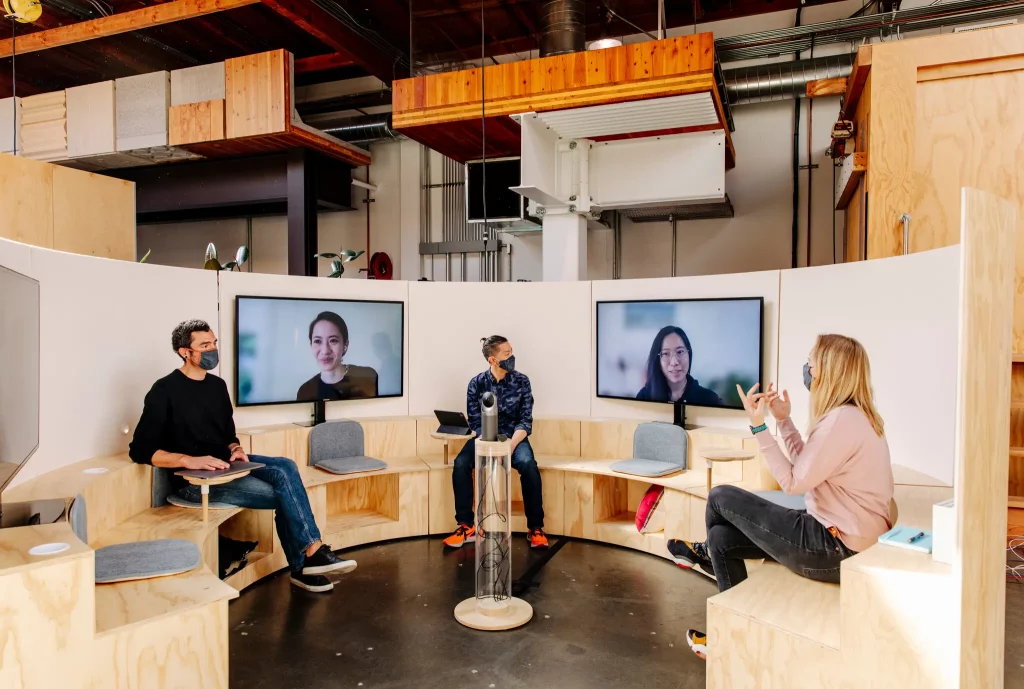6 ways you can rev up enthusiasm within your team—and yourself.
Leaders face a daunting task rolling into 2023: boosting productivity and engagement within an over-stressed and tired workforce. Quiet quitting remains rampant, as does burnout. More recently, productivity has plummeted.
A recent survey shows that two in three Americans claim they lack productivity, and another survey found that the average office worker is only productive for about two hours and 23 minutes each day.
That poses a big challenge for leaders. How do you keep people engaged, inspired and most productive in today’s work world? How do you get them to love their jobs?
Here’s how to get the most out of the time people spend on the job:
1. See people as humans first.
A person’s job title should come second. Smart managers know every employee who walks through the door—and knows them well—because that person is bigger than what you see on a piece of paper or an email or the work they produce, says Saniya Sharma, a U.K. lawyer and founder of Peoplenovate, a project that aims to challenge the status quo in the workplace. “Your treatment of them must combine logic and emotions,” she says.
It shouldn’t be surprising to know that included in this idea is work-life balance and encouraging people to disconnect from work when they’re not at the office. Are you checking in on a person’s overall well being? How are they doing mentally? Are they able to have open conversations with their employees or with their managers? Is the response supportive?
A recent Pew Research Center study found that nearly 40% of employees want their employers to discuss mental health in the workplace. Yet only one in five employees feel comfortable bringing up mental health concerns with HR.
Employees who feel like their ideas are heard and feel that they’re supported at work tend to feel more engaged. A simple thank you can go a long way.
“It’s surprising how easy it is to forget to thank your team for their support when you’re busy and under pressure,” says Natasha Maddock, co-founder of Events Made Simple, an event planning portal. But taking that time to recognize and reward good performance really does help engagement and productivity. She suggests scheduling some time for everyone to recover from a busy push of work.
“These things make a lot of difference in how you perform on a daily basis,” says Sharma. “When you feel that people have your back and are there to support you, it helps you grow.”
2. Rethink your space.
Not surprising, a person’s work environment is hugely important when it comes to getting things done. Natural light has been shown to reduce stress and increase productivity and alertness, and other things can also boost performance—from plants and colors to the ability to personalize our space.
Creating space for quiet focused work is key—because it can allow a person to get out of the bustle and distractions. The University of California at Irvine found that it takes an average of 23 minutes for most people to get back on task after an interruption.
Undisturbed time can pave the way for that prized “flow state.” The flow state is where you’re extremely productive, feel great and you’re totally absorbed and deeply focused on what you’re doing. People tend to have higher work satisfaction and better emotional regulation, and they get more done. The only way to get into that state is to have full concentration on what you’re doing—escaping those overheard phone conversations, people passing and quiet coughs or movement of colleagues.
It’s not just about privacy. Productivity is about having the right areas at work to get work done. Look at your spaces to ensure they foster connection, collaboration, and casual chit chat. Those social spaces can lead to serendipitous interactions that actually aid productivity, collaboration and knowledge dissemination, according to a Cornell University study.
Because work is hybrid, it’s also important to be set up for hybrid meetings. An office conference room with 360-degree cameras can stitch together images to make remote participants feel as if they’re physically in the room. Google, for instance, designed “team pods” with desks, chairs, whiteboards and storage units on casters that could easily be wheeled into various arrangements. Google’s meeting rooms allow people to sit in a circle with video screens that accommodate remote workers, and if a meeting needs privacy, a robot with sensors can inflate a translucent cellophane balloon wall.

To get the best work done, space should be flexible, adjusting to employees’ changing demands and schedules. A modular approach lets you build and reconfigure rooms based on what helps people get work done most efficiently.
3. Encourage social connection.
Social connection is essential to nearly every aspect of health and wellbeing. And, as it turns out, it drives productivity too. When leaders create connection, communication and trust, they’re signaling that a person’s time and talent are respected and valued.

Fauxels, Pexels.
That inevitably results in productivity gains.
Sharma has spent time monitoring the factors that influenced productivity or lack thereof, and people were a big influence on her engagement on the job. “On the days that I felt the most productive, I felt I had a positive relationship at work, someone who I could open up to about my goals, my career,” Sharma says.
Research shows that three in five people who have high social connectivity are more engaged at work, and strong social bonds with coworkers correlates with more motivation. Those who have a best friend at work are seven times more likely to be engaged and improve the quality of their work.
While the rise of remote work has provided huge benefits for the workforce, it has a thorny side that leads many people to feel disconnected and lonely. People who feel the most lonely tend to be those who spend more time working from home. “When you’re lonely, you’re less productive, have more health problems and are more likely to quit,” says Dan Schawbel, managing partner of Workplace Intelligence, and author of Back to Human: How Great Leaders Create Connection in the Age of Isolation.
4. Foster a sense of purpose.
As more companies seek wellness among their employees, they’re increasingly focusing on giving people an overall sense of purpose. Afterall, we spend a third of our lives at work, and if you feel like you’re working towards something you believe in and care about, that can be huge. Research by McKinsey & Co. found that two-thirds of people said COVID-19 prompted them to reflect on their purpose in life and 70% said their sense of purpose is defined by their work. This is even a bigger deal to millennials. In a recent survey, 63% of millennials—essentially workers under 35—said the primary purpose of businesses should be “improving society” instead of “generating profit.” Of course, a person’s individual idea of purpose will vary. It’s a good idea to give employees the chance to reflect on their own sense of purpose and how it connects to the company’s purpose. People who do that are three times more likely than others to feel fulfilled by work, according to McKinsey.

5. Focus on strengths.
It shouldn’t be a surprise that when you focus on a person’s strengths, you’re going to get more out of them. Yet this isn’t always how people manage. A good manager knows that not all people work the same way. They can spot what is unique about each employee and then really lean into those differences.
By encouraging what someone is good at, what they enjoy most and what gives them energy, you’ll likely see a host of positive results. Your team may more easily slip into the “flow” state, completely immersed with the task.
In fact, teams that focused on individual strengths were 12% to 15% more productive, according to a workplace survey by Gallup. In addition, people who used their strengths every day at work were 8% more productive and six times more engaged.
Sharma saw this first-hand while working as an attorney in London: “When my strengths were recognized and I got more opportunities to do those things, it lifted my self-esteem and dignity,” she says. “And I was more excited about work.”
6. Set clear expectations—and provide people with everything they need to get the job done easily.
Establishing clear goals and expectations for employees can help them stay focused and motivated. Make sure that everyone understands what is expected of them and how their work fits into the bigger picture.
Headway, an edtech startup in London, clearly outlines how tasks and commitments are tied to company goals, says Olga Shapovalova, Headway’s strategic management expert. “It helps eliminate micromanagement,” she says.

That said, people need the tools and resources to hit those expectations and really accomplish tasks efficiently. That means technology, training, support—and information. Employees spend at least two hours a day just looking for documents, information or people they need to get their jobs done, according to Glean’s Hybrid Workplace Habits & Hangups report. It found that nearly half of employees are so frustrated by having to search across every company app or service for information that they’d consider leaving a job over it.
“A lot of people think that it’s enough to just let employees work remotely, but if you’re not giving them the right tools and guidance, then they won’t be able to perform at their best,” says Anton Giuroiu, CEO of ArchitectureLab, an architecture and design magazine.
Reinvigorating a depleted workforce and ramping up productivity are directly tied to the comfort of an environment and to a company culture that takes care of its people. Focusing on the individual and how he or she works will go a long way toward everyone hitting their highest potential this year.
